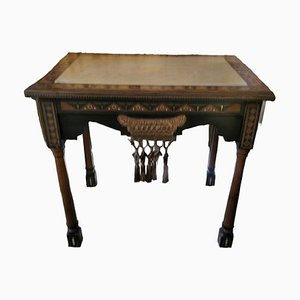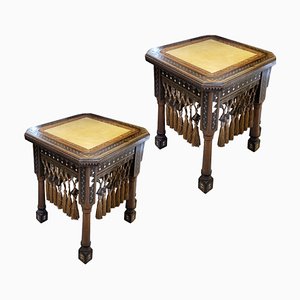
Designer Carlo Bugatti was born in Milan in 1856. He registered at Milan’s Accademia di Brera in 1875, and though conflicting information exists on elements of his biography, he is said to have later attended the École des Beaux-Arts in Paris. In 1880, he began his career in Milan, where he painted and produced a variety of furniture, architecture, ceramics, textiles, and product designs. His furniture designs drew influence from Islamic and Japanese decorative traditions as well as Romanesque architecture; they also often incorporated pieces of parchment or vellum and wood inlayed with pewter or brass.
Around 1903, Bugatti sold his Milan furniture shop, and he and his family (his wife, Teresa Bugatti née Lorioli, and three children—Ettore, Deanice, and Rembrandt) moved to Paris. In France, he focused primarily on silver design, frequently incorporating animal and human forms into his work, which was sold by the firm Adrien Hébrard. Around 1910, Bugatti essentially retired to Pierrefonds, Oise, where he occasionally painted. In 1937, he moved to Molsheim, Alsace. He passed away there three years later, in 1940.
Today Bugatti is recognized as one of the most successful proponents of Italian Art Nouveau, also called Stile Liberty.


